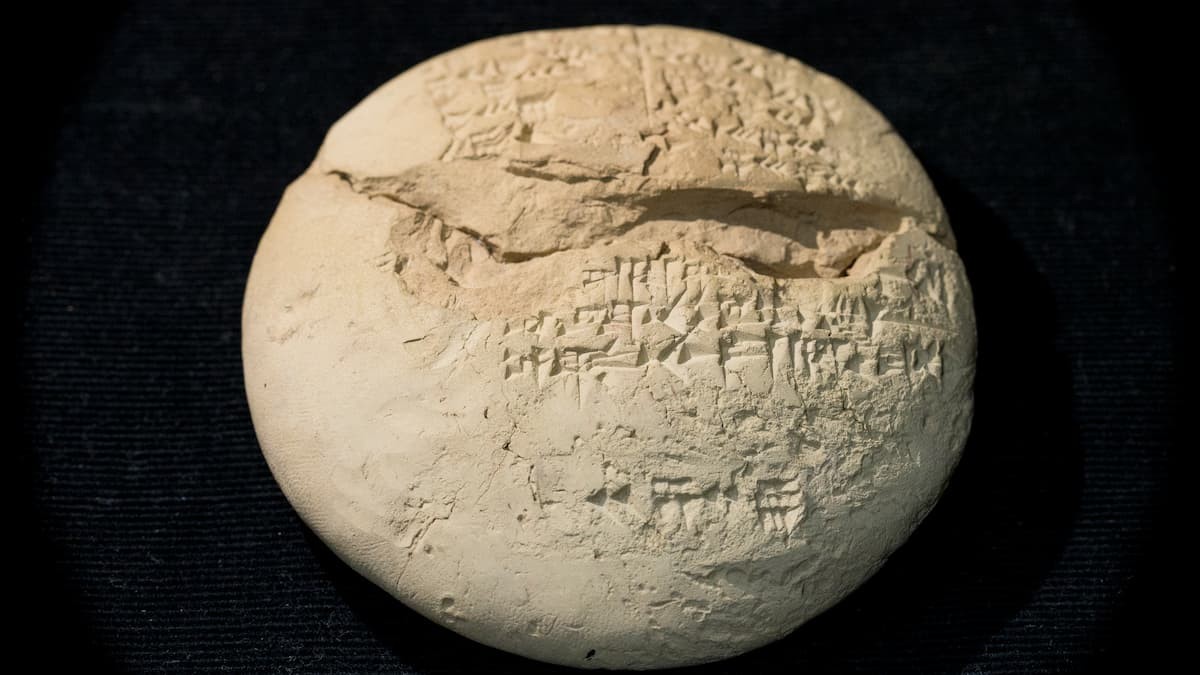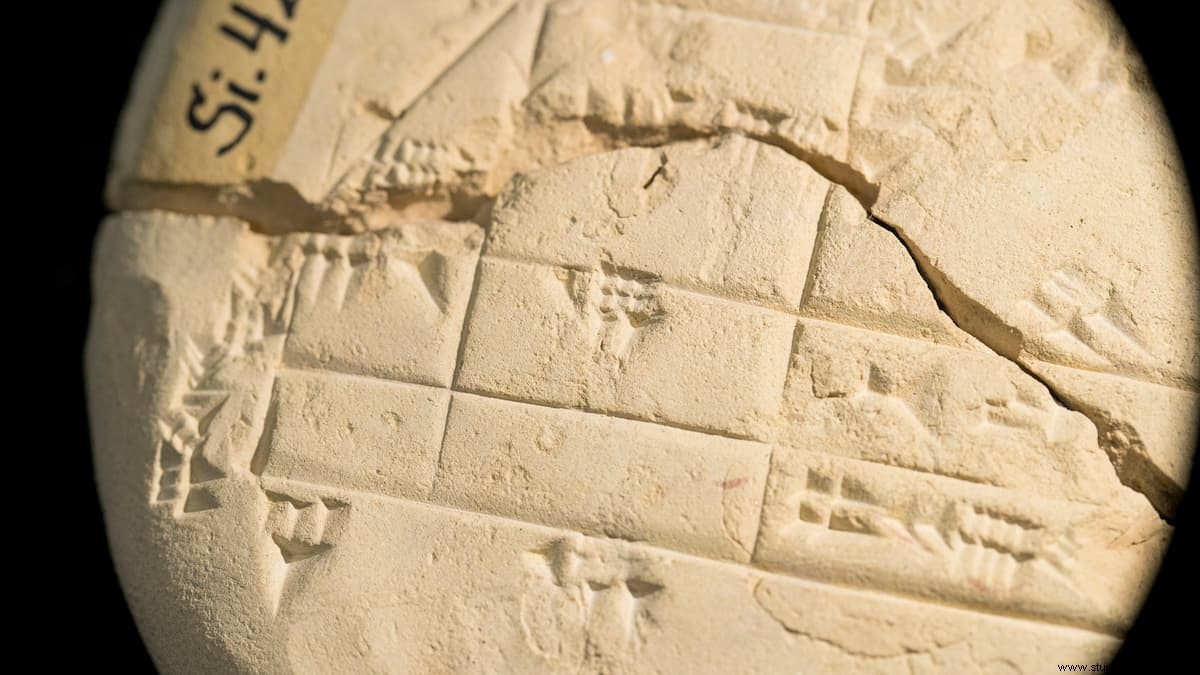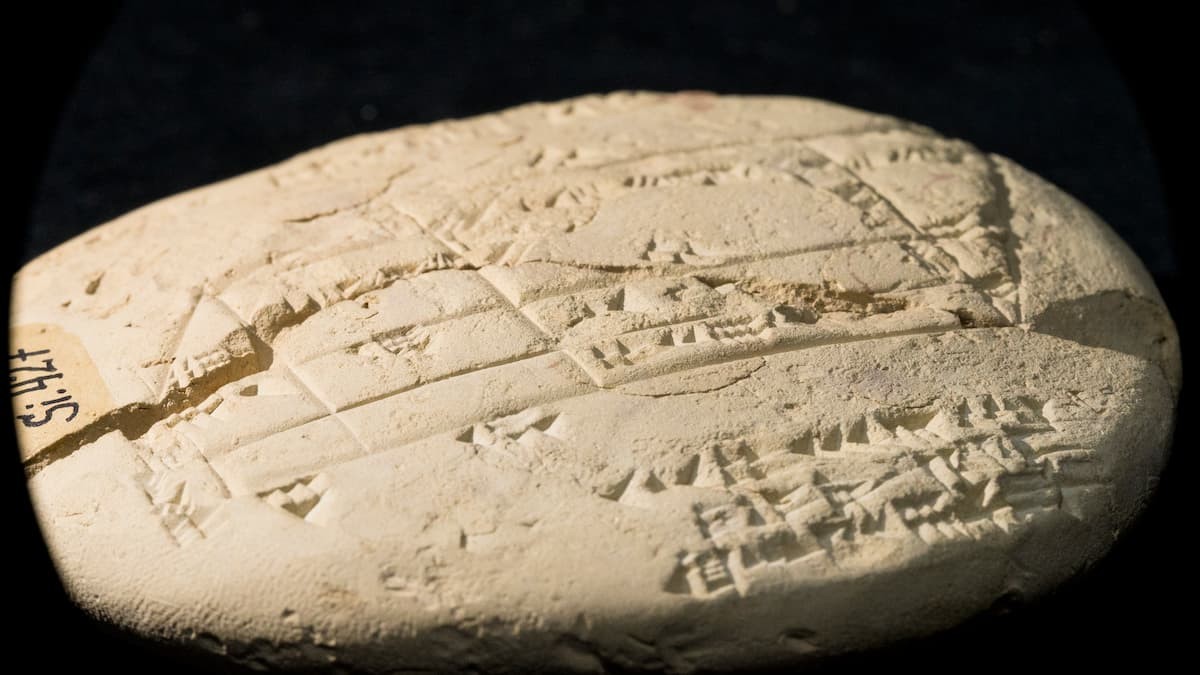The tablet - known as Si.427 - was discovered in the late 19th century in what is now central Iraq, but its significance was unknown until detective work by a University of New South Wales (UNSW) scientist has revealed it.
Most excitingly, Si.427 is believed to be the oldest known example of applied geometry, and in the study published in the journal Foundations of Science the research also reveals a compelling human history of topography.
Si.427 dates to the Ancient Babylonian period (1900 to 1600 BC) , says Dr. Daniel Mansfield, principal investigator at the UNSW School of Mathematics and Statistics. It is the only known example of a cadastral document from the Old Babylonian period, which is a plan used by surveyors to define the boundaries of the land. In this case, it informs us of the legal and geometric details of a divided field after the sale of a part of it .

This is a significant object because the surveyor used what are now known as Pythagorean triples to make precise right angles. The discovery and analysis of the tablet have important implications for the history of mathematics says Dr. Mansfield. For example, this is over a thousand years before Pythagoras was born .
In 2017, Dr. Mansfield surmised that another fascinating artifact from the same era, known as Plimpton 322, was a unique type of trigonometric table. It is generally accepted that trigonometry - the branch of mathematics concerned with the study of triangles - was developed by ancient Greeks studying the night sky in the 2nd century BC says Dr. Mansfield. But the Babylonians developed their own 'proto-trigonometry' to solve problems of measuring the ground, not the sky .
Tablet Si.427 is believed to be even older than Plimpton 322; in fact, problems of topography probably inspired Plimpton 322. There's a whole set of right triangles with different shapes. But only a very small handful can be used by the Babylonian surveyors. Plimpton 322 is a systematic study of this set to discover useful forms says Dr. Mansfield.
As early as 2017, the team speculated on the purpose of Plimpton 322, hypothesizing that it was likely to have some practical purpose, possibly in building palaces and temples, building canals, or surveying fields. With this new tablet, we can see for the first time why they were interested in geometry:to establish precise boundaries of the lands says Dr. Mansfield.

This is a period when land started to be private:people started to think of land in terms of 'my land and your land', wanting to set a proper boundary to have positive neighborly relations. And this is what this tablet immediately says. It is a field that is divided, and new limits are established .
There are even hidden clues in other tablets from that time about the stories behind these limits. Another tablet refers to a dispute between Sin-bel-apli -a prominent individual mentioned in many tablets, including Si.427- and a wealthy landowner says Dr. Mansfield.
The dispute is over some valuable date palms on the border between their two properties. The local administrator agrees to send a surveyor to resolve the dispute. It's easy to see how precision was important in settling disputes between such powerful individuals . Dr. Mansfield says that the way these limits are made reveals true geometric understanding. No one expected the Babylonians to use Pythagorean triples in this way , it is something more similar to pure mathematics, inspired by the practical problems of the time .
An easy way to make an exact right angle is to make a rectangle with sides 3 and 4, and diagonal 5. These special numbers form the Pythagorean triple 3-4-5 and a rectangle with these measurements has mathematically perfect right angles. This is important to surveyors in ancient times and is still used today. The ancient surveyors who made the Si.427 did something even better:they used a variety of different Pythagorean triples, both in the form of rectangles and right triangles, to construct precise right angles says Mansfield.
However, it is difficult to work with prime numbers greater than 5 in the base 60 Babylonian number system. This poses a very particular problem:its unique base 60 number system means that only some Pythagorean forms can be used, it seems that the author of Plimpton 322 went through all these Pythagorean forms to find these useful. This deep and highly numerical understanding of the practical use of rectangles earns the name 'proto-trigonometry', but it is completely different from our modern trigonometry.

Dr. Mansfield learned of the Si.427 tablet by reading about it in excavation records:the tablet was unearthed during the Sippar expedition of 1894, in what is now Baghdad province, Iraq. . The report said that the piece had gone to the Imperial Museum in Constantinople, a place that obviously no longer exists.
From that information, I went on a quest to locate it, speaking to many people in Turkish government ministries and museums, until one day in mid-2018, a photo of the Si.427 finally landed in my inbox. input . That's when I found out it was actually on display at the museum. Even after locating the object, it still took me months to fully understand how significant it is, so it's really satisfying to finally be able to share that story .
Now Dr. Mansfield hopes to find out what other applications the Babylonians had for their proto-trigonometry. There is only one mystery that Dr. Mansfield has not revealed:on the back of the tablet, at the bottom, the numbers "25.29" appear in large letters, that is, 25 minutes and 29 seconds. I can't figure out what these numbers mean – it's an absolute puzzle. I'm looking forward to discussing any clues with historians or mathematicians who might have a hunch about what these numbers are trying to tell us .
